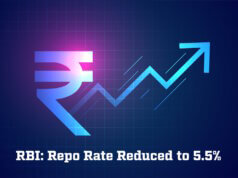The Associated Chamber of Commerce and Industry of India has requested the Ministry of Petroleum and Natural Gas to extend support to a subsea natural gas pipeline project being developed by a global consortium led by South Asia Gas Enterprise Pvt. Ltd.
“One of the important features of this pipeline corridor is that it will completely bypass Pakistan thus averting major threat perception from fundamentalist elements and resultant supply disruption,” said D.S. Rawat, Secretary General, Assocham.
In order to connect the gas rich Middle East region with the gas hungry Indian market, SAGE, an Indian private sector initiative promoted by Siddho Mal Group in association with UK-based Deepwater Technology Co., is working together with a global consortium to create a $4-billion natural gas transportation infrastructure highway linking the Gulf region to India. This geopolitically safe new deep sea route marks a pioneering step in India’s quest for energy security for rapid economic growth, with cleaner energy.
Phase-I of the “Energy Corridor” is expected to be completed by end of 2017 and will enable Middle East/Gulf suppliers to deliver natural gas to gas buyers in India.
The company has received nod from Turkmenistan/Iran for supply of gas on long-term basis through these pipelines. SAGE is in discussion with Qatar for the same. Each SAGE pipeline would deliver around 8 tcf of natural gas to India over 25 years (31 mmscmd). The Middle East/Gulf holds gas reserves of above 2,000 tcf.
This pipeline project would complement LNG sales to India, due to the increasing volatility of LNG pricing as an internationally traded spot-market commodity. Due to recent Indian rupee steep depreciation, the subsidised power and fertiliser industry need more pipeline gas to remain competitive.
SAGE features an upstream Middle East natural gas-gathering system connecting multiple gas sources in the Middle East. From this Gulf gas hub, the SAGE deepwater pipelines would cross the Arabian Sea to the south of the territorial waters and economic exclusion zones of all third party countries and would mainly follow a route to India, reaching a depth of 3,500m, which was extensively surveyed 15 years ago. Since then, the techniques of deepwater pipelay and line pipe manufacture have matured as the Oil & Gas industry has accumulated substantial experience of working in very deep waters.
Saipem of Italy, Heerema Marine Contractorsof Netherlands and INTECSEA of US, which have signed a memorandum of understanding with SAGE for constructing new generation pipelay barges, have declared the project to be technically feasible using latest technologies. Significant technical inputs have also been received from Corus, another MoU partner. Regulatory Agency DnV, Norway, has confirmed that the selected pipe size has a sufficient safety level.
Indian pipe mills like Welspun and Jindal Saw are considered to supply steel pipes for this 1,200-km pipeline project. The company has signed agreements with GAIL (India) Ltd, IndianOil, Gujarat State Petroleum Corporation Ltd, Ministry of Oil & Gas (Oman), FUGRO and National Iranian Gas Export Co. Much of the design and engineering activity would be undertaken in India and the Middle East, with support of consultants like Engineers India Ltd and Peritus International of UK.
The SAGE pipelines are envisaged as “Common Carriers” that would provide a gas transportation infrastructure to multiple gas sellers in the Middle East and multiple gas buyers in India, for an estimated tariff in the region of $1.5/1.75 per million btu from the Oman/Iran coast to the Indian coast.
Each pipeline capacity of 31 million standard cubic metres per day of gas is sufficient for 7,000-7,500 MW power generation and to produce several million tonnes of fertilisers (urea/ammonia) annually.
Three natural gas pipelines are envisaged over the next 10 years, each having similar capacity along this route undersea. The geo-physical survey was completed in June, 2013 with the vessel, FUGRO GAUSS in the Arabian and Oman seas with positive results. This would help to move to frontend engineering design study stage and award of EPC contract by end of 2014, said, Subodh Kumar Jain, Director, South Asia Gas Enterprise Pvt. Ltd.











